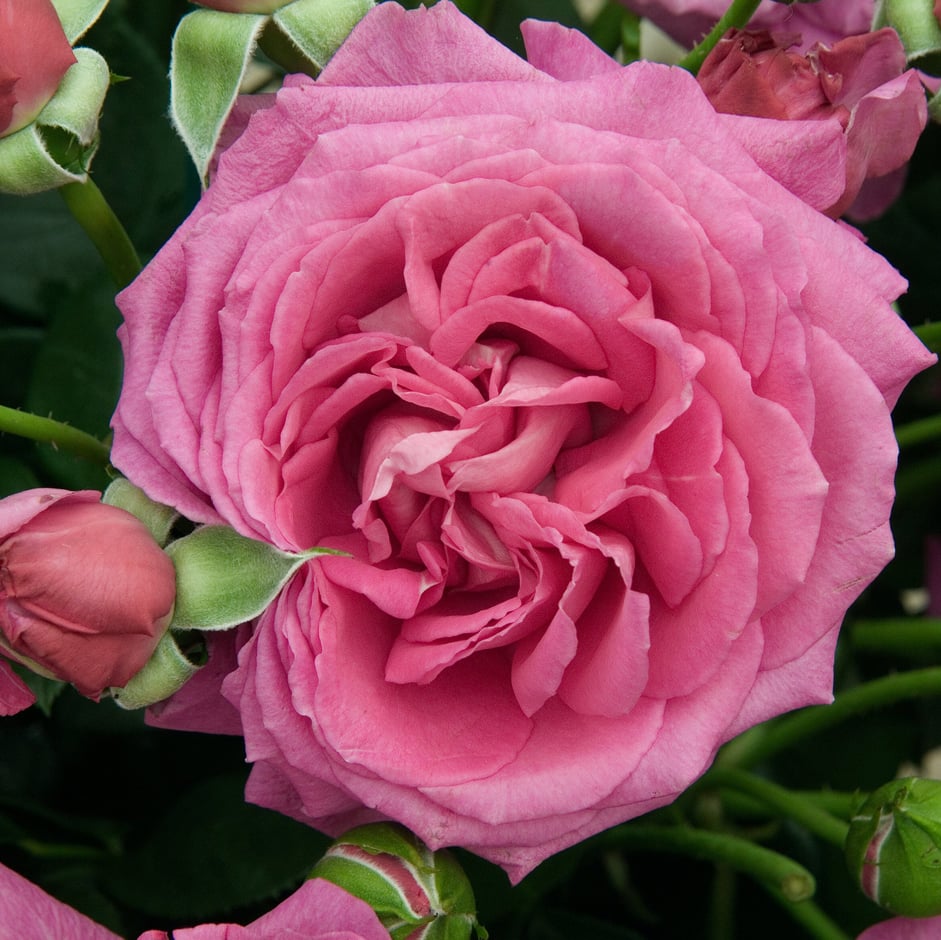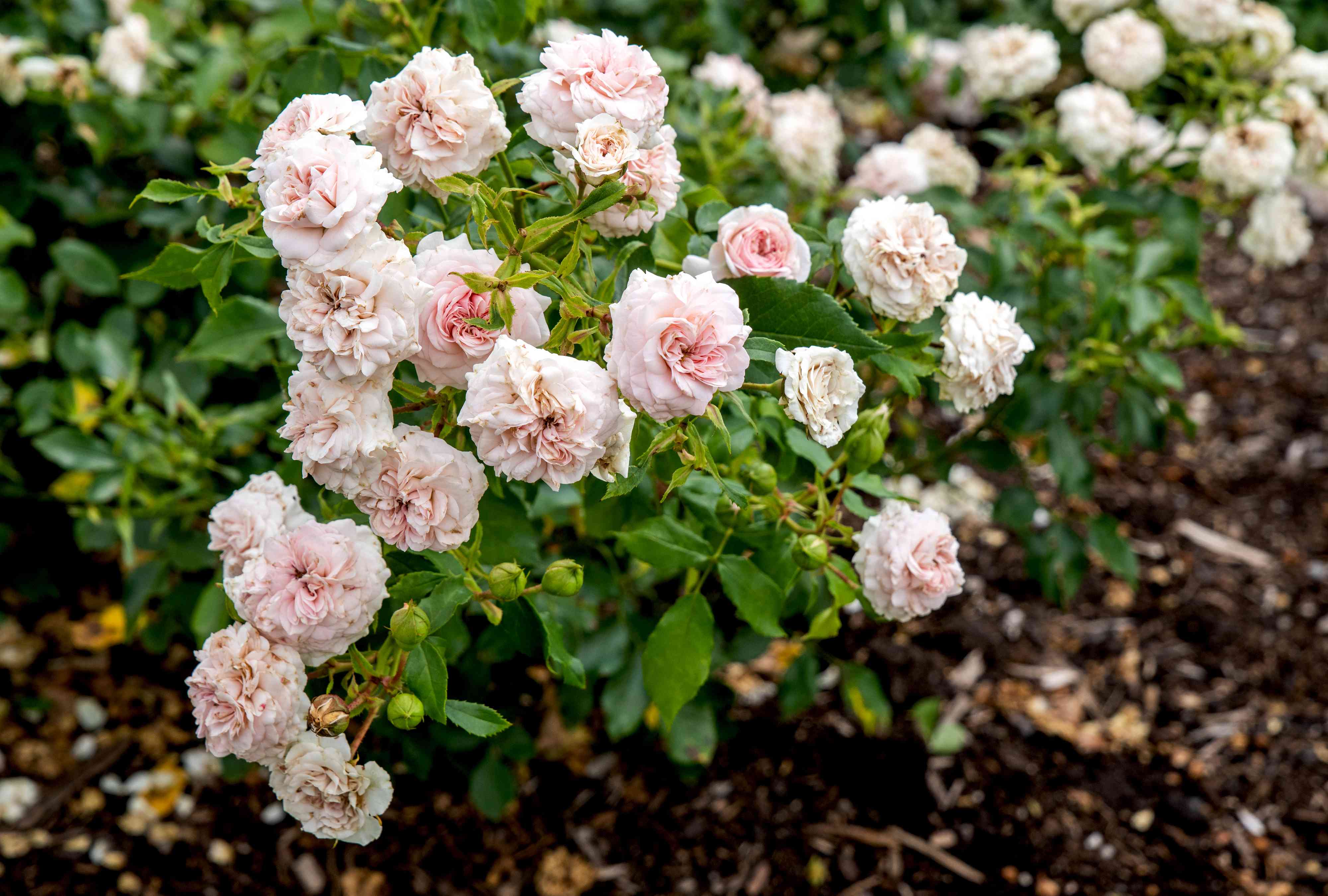Hybrid Tea Roses Vs. Floribunda: Which Is Best For Your Garden?
Hybrid tea roses and floribunda roses offer different blooms and growth habits. Let’s take a closer look to see which rose is best suited for your garden.
Oct 20, 202435.2K Shares469.8K Views

Roses are often considered the queens of the garden, admired for their beauty and fragrance. Among the most popular types are hybrid tea rosesand floribunda roses.
Both varieties have their charm and specific growing habits, making them suitable for different gardening preferences. This article will compare these two rose types to help you choose the best one for your garden.
What Are Hybrid Tea Roses?
Hybrid tea roses are famous for their long stems and stunning single blooms, which make them ideal for cutting. The term "hybrid tea" doesn’t refer to tea as a beverage, but rather to the tea-like fragrance that early varieties of these roses were known for. First introduced in 1867 by Guillot of France, the hybrid tea rose quickly became popular for its elegant flowers and strong fragrance.
Defining Features:
- Large, Single Blooms: Each stem typically bears one large, high-centered flower, perfect for use in floral arrangements.
- Upright Growth: Hybrid tea roses grow upright, reaching heights of 4 to 5 feet, with their stems making them suitable for display in formal gardens or as focal points.
- Fragrance: Many hybrid tea varieties are known for their strong, pleasant fragrance, which adds to their appeal in adding gardens and floral displays.
Hybrid tea rosesare often the first type that comes to mind when people think of traditional roses. They are elegant, and show-stopping, and make excellent cut flowers due to their long, straight stems.
What Are Floribunda Roses?
Floribunda roses, introduced in the early 20th century, were developed by crossing hybrid tea roses with polyantha roses. The name "floribunda" means "many flowers" in Latin, reflecting the fact that these roses bloom in clusters, providing abundant color throughout the growing season.
Distinctive Traits:
- Cluster Blooms: Floribunda rosesproduce multiple smaller blooms in clusters, which makes them ideal for creating vibrant color displays in garden beds.
- Compact Growth: Floribundas typically grow between 3 to 4 feet tall, with a bushier structure that is perfect for garden borders and mass planting.
- Frequent Blooming: Floribunda roses are known for their continuous blooming from summer through late autumn, providing consistent color in the garden.
Unlike hybrid tea roses, which often bloom in flushes, floribundas are prolific bloomers, producing an "abundance of floras" throughout the season. This quality makes them a popular choice for gardeners looking for low-maintenance yet showy plants.
Key Differences Between Hybrid Tea Roses And Floribunda
Flower Form And Bloom Style
- Hybrid Tea: Known for their single, large blooms on long stems, hybrid teas are perfect for cut flowers and floral arrangements.
- Floribunda: Floribundas bloom in clusters of smaller flowers, providing a more dramatic mass display of color in garden beds.
Growth Habit And Size
- Hybrid Tea: Typically grows upright, reaching heights of 4 to 5 feet, with some varieties growing as tall as 7 feet. Their structured form makes them ideal for formal gardens.
- Floribunda: Floribundas are bushier and more compact, growing to heights of about 3 to 4 feet, which makes them well-suited for borders and hedging.
Blooming Frequency
- Hybrid Tea: These roses tend to bloom in cycles, usually three flushes between summer and autumn. While the blooms are large and showy, they are less continuous compared to floribundas.
- Floribunda: Known for their continuous blooming throughout the growing season, floribunda roses offer an almost uninterrupted display of flowers from early summer to late autumn.
Fragrance
- Hybrid Tea: Many hybrid tea roses have a strong, pleasant fragrance that enhances their appeal in both gardens and floral arrangements.
- Floribunda: While some floribunda varieties have fragrance, they are generally less scented than hybrid tea roses.
Care And Maintenance
- Hybrid Tea: Requires more intensive rose care, including regular pruning and protection from pests and diseases. Hybrid tea roses are also less hardy, meaning they may need more protection in colder climates.
- Floribunda: Easier to care for and more robust, floribunda roses have better disease resistance and are generally hardier, making them a good choice for beginners.
Pruning: Floribunda Vs. Hybrid Tea Roses
Pruning is essential for ensuring both floribunda and hybrid tea roses grow vigorously and flower well each year. If not pruned, these roses can become tangled, leading to fewer flowers and poor health. Hybrid tea and floribunda roses follow similar pruning techniques, with a few key differences.
How To Prune Hybrid Tea Roses:
- Cut back the strongest remaining shoots to 4 to 6 buds, about 10-15cm from the base, to encourage new growth.
- Shorten less vigorous shoots to 2 to 4 buds, around 5-10cm from the base.
- Remove any dead, diseased, or crossing stems to promote healthier growth.
How To Prune Floribunda Roses:
- Floribundas are pruned to leave longer stems with more buds to encourage the characteristic mass of blooms.
- Cut back the strongest remaining shoots to about 25-30cm from the soil level.
- Less vigorous stems should be pruned more severely to encourage new, stronger growth.
Pruning ensures both rose varietiesmaintain their shape and produce the best blooms possible, but floribundas tend to require less frequent pruning than hybrid teas.
Popular Varieties Of Hybrid Tea Roses And Floribunda
Popular Hybrid Tea Varieties:
- 'Mister Lincoln': A deep red hybrid tea with velvety petals and a strong fragrance, often used for cutting.
- 'Pascali': A classic white rose known for its large, fully double blooms and high disease resistance.
- 'Double Delight': Cream-colored flowers with red edges and a rich fragrance, known for its beauty and scent.
Popular Floribunda Varieties:
- 'Iceberg': One of the most popular floribunda roses, producing abundant white blooms and known for its resilience.
- 'Rhapsody in Blue': A stunning floribunda with purple blooms and a fruity-floral fragrance.
- 'Golden Wedding': Known for its rich, golden-yellow blooms, this variety adds warmth and vibrancy to any garden.
FAQs About Hybrid Tea Roses Vs. Floribunda
What Is The Main Difference Between Hybrid Tea Roses And Floribunda?
The primary difference lies in the flower structure and growth habits. Hybrid tea roses produce single, large blooms on long stems, while floribundas bloom in clusters of smaller flowers.
Are Hybrid Tea Roses Harder To Care For Than Floribunda?
Yes, hybrid tea roses generally require more care, including regular pruning and attention to disease prevention. Floribundas are more resilient and easier to maintain.
Which Rose Type Is Best For Novice Gardeners?
Floribunda roses are ideal for novice gardeners due to their continuous blooming, lower maintenance, and hardiness compared to hybrid tea roses.
Can Hybrid Tea And Floribunda Roses Be Planted Together?
Yes, they can complement each other in garden designs, with hybrid teas acting as focal points and floribundas adding mass color around them.
Which Type Of Rose Blooms More Frequently?
Floribunda roses bloom more frequently, offering continuous flowering throughout the growing season, while hybrid teas tend to bloom in distinct cycles.
Conclusion
Hybrid tea roses provide striking, large blooms on long stems, making them perfect for cutting and formal garden displays. They require more maintenance but offer dramatic flowers.
Floribunda roses, on the other hand, bloom continuously in clusters, offering a vibrant display of color with less maintenance. Choosing between these two types depends on your garden’s needs and your personal gardening preferences.
Latest Articles
Popular Articles

